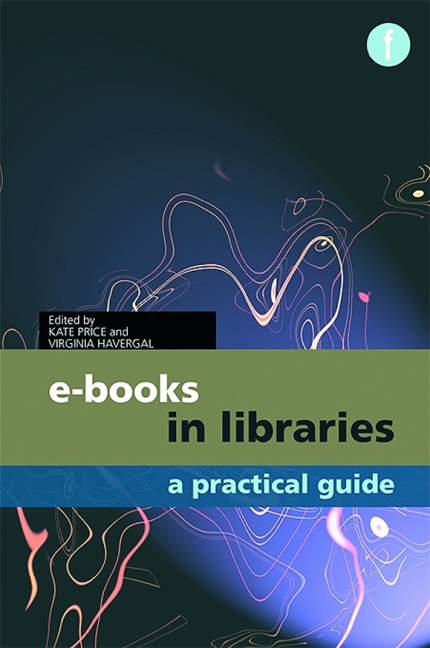Book contents
- Frontmatter
- Contents
- Preface
- The contributors
- Editors’ note
- Introduction
- Part 1 The production and distribution of e-books
- Part 2 Planning and developing an e-book collection
- Part 3 Delivering e-books to library users
- Part 4 Engaging readers with e-books
- Part 5 The future of e-books
- Part 6 Useful information
- Glossary
- Top tips from the contributors
- Checklist for e-book acquisition
- Accessible e-book services in public libraries Denise Dwyer
- Selected e-book suppliers
- Supplementary reading
Checklist for e-book acquisition
from Part 6 - Useful information
Published online by Cambridge University Press: 08 June 2018
- Frontmatter
- Contents
- Preface
- The contributors
- Editors’ note
- Introduction
- Part 1 The production and distribution of e-books
- Part 2 Planning and developing an e-book collection
- Part 3 Delivering e-books to library users
- Part 4 Engaging readers with e-books
- Part 5 The future of e-books
- Part 6 Useful information
- Glossary
- Top tips from the contributors
- Checklist for e-book acquisition
- Accessible e-book services in public libraries Denise Dwyer
- Selected e-book suppliers
- Supplementary reading
Summary
A number of the contributors to this book have provided their own essential tips on how to create and make the most of a library collection of e-books, and these provide a very useful starting point for those who are new to this area of work.
Part 1: The production and distribution of e-books
Choosing a supplier (Anna Grigson)
With so many different suppliers offering so many different business models it can be difficult to compare like-for-like when choosing a supplier. Create a checklist of the criteria that are important to you – for example, whether you need access for multiple simultaneous users – and use it to compare and rank vendors’ business models, pricing and licence terms to find which ones are the best match for your requirements.
Making good use of Google Books (Kate Price, with thanks to Joseph Ripp)
Use the Advanced Search facility on Google Books to limit the search to ‘Full view only’ in order to identify texts that are freely available in full. (Note that this setting reverts back to ‘All books’ with each new search.)
For those with a Google account, it is possible to set up, organize and annotate a virtual bookshelf on Google Books, which can then be shared with other users by sending them a link, or embedding it within a web page. This may be useful for supporting groups of students with specific projects, or for guiding readers to frequently requested material that is not available within the local library collection.
Part 2: Planning and developing an e-book collection
Providing a good range of material (Martin Palmer)
The single most important contributory factor to the success of public library e-book services (assuming that all of the technical details have been sorted out!) is much the same as that for a print collection – the range and amount of material on offer. Readers will be encouraged to return if there appears to be an abundant choice of material, but if the service does not have a critical mass of titles available for use from day one, then a major promotional opportunity will have been lost.
- Type
- Chapter
- Information
- E-books in LibrariesA practical guide, pp. 285 - 288Publisher: FacetPrint publication year: 2011



